195 Judging Crufts
JUDGING CRUFTS
by David Hancock
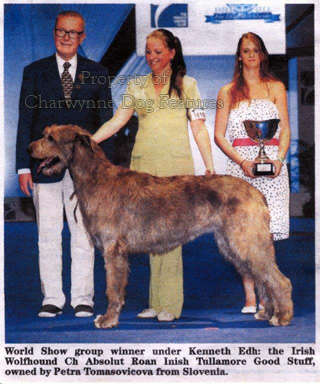
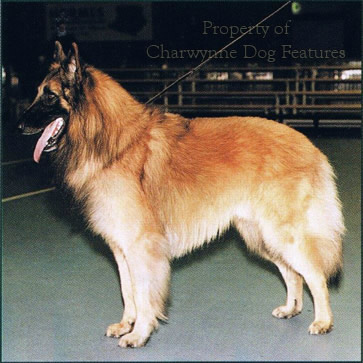 "The general public, those who take any interest in dogs, are confident that the actual judging for Best in Show may be a farce. They feel, in the first place, that the person appointed is quite often not qualified to make the decision..." No, these are not the words of an anti-dogshow journalist or a bitter exhibitor with an unplaced entry. They are the words of R.H. Smythe, a veterinary surgeon who bred, reared and exhibited dogs of almost every known breed, in his book "Judging Dogs". The fact that it was written twenty years ago gives it even more validity, for few would disagree that the top dog show judges were far better then.
"The general public, those who take any interest in dogs, are confident that the actual judging for Best in Show may be a farce. They feel, in the first place, that the person appointed is quite often not qualified to make the decision..." No, these are not the words of an anti-dogshow journalist or a bitter exhibitor with an unplaced entry. They are the words of R.H. Smythe, a veterinary surgeon who bred, reared and exhibited dogs of almost every known breed, in his book "Judging Dogs". The fact that it was written twenty years ago gives it even more validity, for few would disagree that the top dog show judges were far better then.
As a counter to this, it could be argued that this is but one comment on the imprecise art of judging dogs on appearance, made some thirty years ago. But for years there has been sustained discontent over how judges at dogshows are appointed and whether they should be formally trained and pass examinations for such a task.
Considerable concern was expressed in 1993 for example when a judge was approved by the Kennel Club as being authorised by them to judge every single breed for which KC championship certificates were then on offer, i.e. 137 different breeds. A number of distinguished breed specialists have expressed worries over whether one person could, with the competence needed, judge across such a wide variety of size, shape, texture of coat, colour, head, gait and breed idiosyncrasies. But what do the judges themselves think of other judges? Here are two critiques by judges at Crufts, our premier showdog event. Firstly, on deerhounds: "I was VERY disappointed in the quality...How do they qualify?" and secondly on great Danes: "I did frankly wonder how some of the dogs there had even managed to win a 1st prize!...the lowering of the general quality of the hounds coming into the ring is only a long continuation of the process that respected senior allrounders and our own experienced breed specialists have been warning us about for years..."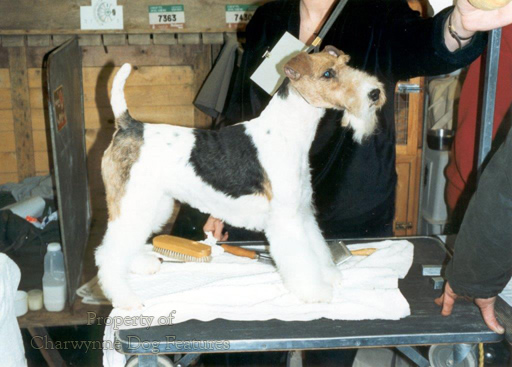
When the general public go to Crufts, they think they are seeing the top quality. But if the judges at Crufts make such comments, what is the standard like at the shows at which dogs qualify for Crufts? Here are samples of judges' comments at those shows: Irish wolfhounds - "I must comment on the hounds that came under me and I feel bound to say I had a bad shock...many of the younger hounds, puppies and some novices, were really quite shattering." Welsh terriers - "Somewhere along the line things have gone wrong in the breed..." Rough collies - "I was deeply disappointed with the quality, particularly amongst the dogs..." and from another show - "Unfortunately the standard of a good proportion of the exhibits left a lot to be desired..." Whippet (club championship show) - "I must say I was appalled by many of the exhibits...each time I judge makes me fear for the future of the breed..." Cairn terriers - "To be truthful I have been worried at the number of really poor specimens who have been winning lately..." And finally, Cavalier King Charles spaniels - "It gives continued rise for concern to genuine devotees of the breed that quality and soundness in depth are lacking, this breed having paid the price of its popularity."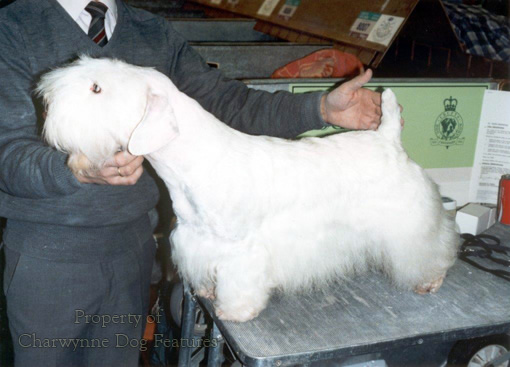
Such comments do not give much encouragement to those expecting quality in the dogs which actually qualify for Crufts. And it is no good gundog men noting the above and thinking that their pedigree stock is any better. Judges have in the last few years made these comments on the gundog breeds: Gordon setters - "Unless something is done quickly by the top breeders I see no hope for the breed, because the puppies were so bad." Pointers - "I was dismayed to find such a wide divergence in type and size. Many showing foxhound or greyhound-like characteristics." Labradors - "I would like to mention incorrect mouths - I have never come across so many variations before and some were quite severely wrong". Golden retrievers - "Bitches: I wish I could rave about the standard overall but alas I found quality and construction sadly lacking in so many of the exhibits."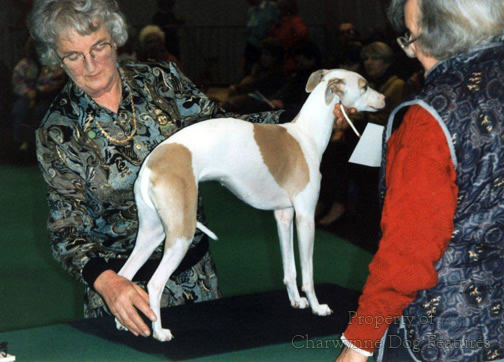
Many houndshow judges, at Honiton, Rydal and Peterborough, judge mainly on movement, pointing out that hounds are functional animals and that sound movement indicates sound construction. But here are some showdog judges' comments on movement in pedigree breeds: Staffordshire bullterriers - "First movement was almost universally bad..." and at another show - "...today it (action - movement) was quite deplorable in a high proportion of exhibits..." Dalmatians (championship show) - "...movement is still causing concern. One aspect that did worry me was to find quite a few exhibits that could not place their front legs and particularly feet down correctly..." And finally, basenjis - "I was very disappointed...I felt that presentation, movement and quality, in the majority of cases, was very poor indeed." (At one show the judge gave a badly limping dog the championship certificate, stating that he had seen the dog at other shows!) 
But temperament, so very important for a family wishing to own a pedigree dog also received adverse comment: Boxers - "For the first time in many years I feel that we now have a problem with temperament and for the first time ever in this country a boxer has attempted to bite me and mean it. A number of animals would not be handled..." (A judge from Germany thought so little of the exhibits at an Irish boxer club's championship show in Ulster that he withheld six first prizes, Some winning dogs from Great Britain were discarded.) West Highland White terriers - "What has happened to the temperament of our breed?...I was very disappointed with the overall standard." Chow chows - "I found that temperament is going from bad to worse."
At Battersea Dogs' Home between 1990 and 1992, 697 dogs from one particular breed were destroyed as being of "unsound temperament - not advised as family pets". This breed is not banned under the misguided Dangerous Dogs Act. But it is doubly worrying when huge dogs are reported as having suspect temperament. Here are just two judges' critiques on the larger breeds: Bloodhound Club show - "I was terribly disappointed in the dog hounds...I was also concerned by the amount of snarling..." and Irish wolfhounds - "At Leeds, there was quite a bit of rumbling and snapping round the ring which never used to be the case and especially in a giant breed, should never be the case."
This collection of quotations all come from the dogshow judges themselves, not from antagonistic hypercritical critics from outside the 'dog game'. Of course there are plenty of judges' critiques full of praise for dogs of all breeds. But if there are doubts about the quality of the judges as assessors, can such praise withstand scrutiny? The sooner the Kennel Club introduces formal training for dogshow judges, with examinations to confirm this training, the better for the quality control at our dog shows and more importantly in our future pedigree stock.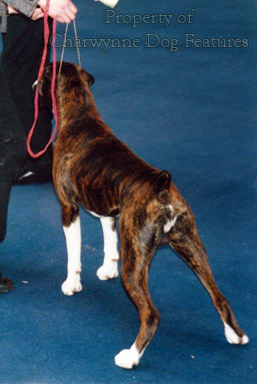
I understand that in Japan, in order to judge one breed, the shiba inu, it is necessary to be a member of the breed chapter for five years, a judge's assistant for at least two years, a judge's trainee for at least three years, to attend the judge's course at least twice and pass an examination. Then an indefinite further period has to be served as an Associate Judge before fully qualifying.
In a "discussion document" published by the Kennel Club in 1993 entitled "The Exhibition of Dogs", it is stated that: "Everyone is aware that judging of dogs is subjective and opinions regarding merit of a particular animal vary...It is necessary therefore to consider whether...A system of formal testing prior to a judge being passed for Championship Show Status awarding Challenge certificates should be instituted." Japan is a long way away and perhaps a long way ahead.
Crufts in 1995 attracted 20,000 "top" dogs, as well as 80,000 visitors from 44 countries. Its global appeal is gratifying. But behind the glitter is a clear need for a review of standards, both in dogs and judges. Clearly the association in the public mind between quality and Crufts is not justified. If you believe the dogshow judges there is a lack of quality in our pedigree breeds of dog, together with suspect temperament. Successful showdogs are likely to be bred from the most. If the best of these is earning the kind of comments spelt out above, what must the worst be like? and they are ending up in the pet market. Be careful when you are buying your next dog!